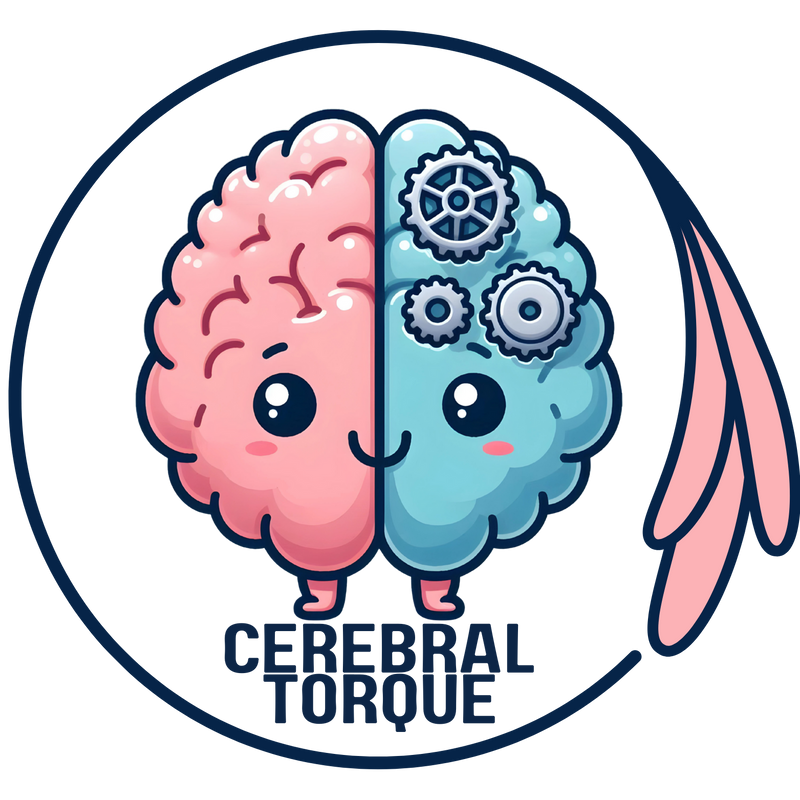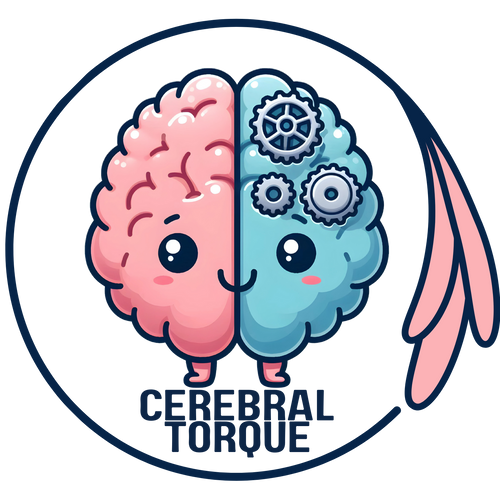Migraine and Cardiovascular Disease: The Hidden Connection
Posted on June 20 2025,
Migraine and Cardiovascular Disease: The Hidden Connection
The Hidden Connection
For years, migraine was viewed as "just" a severe headache disorder. However, research has revealed that migraine, particularly migraine with aura, is connected to increased cardiovascular risk. This isn't just about having both conditions. It's about shared biological pathways that make migraine a potential early warning sign for heart and vascular problems.
Key Research Findings
A comprehensive 2025 review published in Neurology and Therapy analyzed multiple studies and found that migraine, especially with aura, consistently associates with increased risk of cardiovascular events including stroke, heart attack, and other vascular complications.
Stroke Risk and Migraine
The connection between migraine and stroke is the most well-established cardiovascular link. Multiple large studies have confirmed that people with migraine, especially migraine with aura, face significantly higher stroke risk.
Migraine with Aura: The highest risk group, with approximately double the stroke risk. The aura or visual, sensory, or language symptoms that occur before the headache phase (usually, but may also coincide with headache) appear to be a particularly important risk marker.
Migraine without Aura: Still carries increased risk, though typically lower than migraine with aura. The risk may be more pronounced when combined with other cardiovascular risk factors.
Young Women: The stroke risk is significant in women under 45, especially those who smoke or use estrogen-containing birth control.
Important Risk Factors
Stroke risk is especially elevated in people with migraine who also:
- Smoke cigarettes
- Use estrogen-containing oral contraceptives
- Have frequent migraine attacks
- Are women under age 45
- Have other cardiovascular risk factors
Heart Disease and Coronary Connections
Beyond stroke, research has identified connections between migraine and various heart conditions, including coronary artery disease, heart attacks, and heart rhythm problems.
Coronary Artery Disease
Studies have found that people with migraine, again, especially migraine with aura, show increased rates of coronary artery disease. This includes both traditional blockages and less common conditions like spontaneous coronary artery dissection (SCAD).
Research Highlight: SCAD Connection
In a study of 585 people with spontaneous coronary artery dissection (a condition where the artery wall tears), 42% had a lifetime history of migraine. This is much higher than the general population rate of about 15-20%.
Heart Rhythm Problems
Recent studies suggest people with migraine may have increased risk of atrial fibrillation, an irregular heart rhythm that can lead to stroke and other complications. The risk appears highest in people with migraine with aura and may be related to shared problems with the autonomic nervous system.
New Research: Atrial Conduction Changes
A 2025 study published in Acta Neurologica Belgica examined 55 migraine patients and found significant changes in heart electrical activity. Migraine patients showed prolonged P-wave duration (196 ms vs 131 ms in controls) and increased P-wave dispersion (133 ms vs 63 ms), indicating problems with atrial conduction even before obvious heart disease develops.
Blood Pressure Connections
The relationship between migraine and blood pressure is complex. Some studies show migraine patients have higher rates of hypertension, while others suggest the relationship varies by age and migraine type. What's clear is that blood pressure should be carefully monitored in people with migraine.
Shared Risk Factors
Migraine and cardiovascular disease share many risk factors, suggesting common underlying mechanisms. Understanding these connections can help with both prevention and treatment.
Lifestyle Risk Factors
Several lifestyle factors increase risk for both migraine and cardiovascular disease:
- Smoking: Dramatically increases stroke risk in people with migraine (up to 9-fold increase)
- Poor Diet: Processed foods and high sodium intake worsen both conditions
- Physical Inactivity: Lack of exercise increases migraine frequency and cardiovascular risk
- Sleep Problems: Poor sleep quality affects both conditions
- Stress: Chronic stress is a major trigger for both migraine and heart problems
- Obesity: Excess weight increases both migraine frequency and cardiovascular risk
Biological Mechanisms
Scientists have identified several biological pathways that explain why migraine and cardiovascular disease are connected. These shared mechanisms suggest that migraine may be an early sign of systemic vascular problems.
Research has identified shared genetic risk factors between migraine and cardiovascular disease. Key genes include:
- PHACTR1: Affects both blood vessel function and brain activity
- MTHFR: Involved in blood clotting and stroke risk
- Factor V Leiden: Increases clotting risk in some migraine patients
Vascular Dysfunction
Both migraine and cardiovascular disease involve problems with blood vessels:
- Endothelial Dysfunction: The inner lining of blood vessels doesn't work properly
- Increased Clotting: Blood is more likely to form dangerous clots
- Inflammation: Chronic inflammation damages blood vessels over time
- Oxidative Stress: Harmful molecules damage cells and blood vessels
- Atrial Conduction Problems: New evidence shows migraine affects the heart's electrical system, with patients showing prolonged atrial electromechanical delay and altered P-wave patterns
Cortical Spreading Depression
The brain wave that causes migraine aura (cortical spreading depression) may also affect blood vessels throughout the body, potentially explaining the cardiovascular connections.
Treatment Approaches
Understanding the migraine-cardiovascular connection has important implications for treatment. The goal is to address both conditions while avoiding treatments that might worsen cardiovascular risk.
Migraine Treatments with Cardiovascular Benefits
New CGRP Treatments
The newest migraine treatments target a protein called CGRP (calcitonin gene-related peptide). These treatments have shown excellent safety profiles regarding cardiovascular risk:
- CGRP Monoclonal Antibodies: Monthly or quarterly injections that prevent migraine with minimal cardiovascular side effects
- CGRP Receptor Blockers: Oral medications for acute migraine treatment that don't constrict blood vessels like other treatments
- Mood Benefits: Some evidence suggests these treatments may also help with depression and anxiety often seen with migraine
Treatments to Use Carefully
Some migraine treatments may increase cardiovascular risk and should be used cautiously or avoided in people with heart problems:
- Triptans: Can constrict blood vessels; avoided in people with heart disease or stroke history
- NSAIDs: Long-term use may increase heart attack and stroke risk
- Ergotamines: Strongly constrict blood vessels; generally avoided in people with vascular disease
Prevention Strategies
Since migraine and cardiovascular disease share many risk factors, prevention strategies often help both conditions. The key is addressing modifiable risk factors through lifestyle changes and appropriate medical care.
Lifestyle Modifications
- Regular Exercise: 30 minutes of moderate activity most days reduces both migraine frequency and cardiovascular risk
- Heart-Healthy Diet: Mediterranean-style eating patterns help both conditions
- Stress Management: Techniques like meditation, yoga, and cognitive behavioral therapy
- Quality Sleep: 7 to 9 hours of consistent, quality sleep
- Smoking Cessation: Critical for reducing stroke risk in people with migraine
- Weight Management: Maintaining healthy weight helps both conditions
Medical Prevention
People with migraine should receive regular cardiovascular screening:
- Blood Pressure Monitoring: Regular checks, especially for people with frequent migraine
- Cholesterol Screening: Some studies suggest migraine patients may have abnormal lipid profiles
- Diabetes Screening: Important since diabetes increases cardiovascular risk
- Aspirin Consideration: Low-dose aspirin may help some people with migraine and cardiovascular risk
- Heart Rhythm Assessment: Given new evidence of atrial conduction changes, ECG monitoring may be valuable for people with frequent migraines
Integrated Care Approach
The best outcomes often come from integrated care involving neurologists, cardiologists, and primary care providers working together to address both migraine and cardiovascular health.
Special Populations
Women and Hormonal Considerations
Women face unique challenges due to the interaction between migraine, hormones, and cardiovascular risk:
- Birth Control: Estrogen-containing contraceptives increase stroke risk in women with migraine with aura
- Pregnancy: Migraine may be linked to increased risk of pregnancy complications like preeclampsia
- Menopause: Hormonal changes can affect both migraine patterns and cardiovascular risk
Older Adults
Cardiovascular risk increases with age, making the migraine connection particularly important in older adults:
- New-onset migraine after age 50 may warrant cardiovascular evaluation
- Treatment choices must consider both conditions and other age-related health issues
- Regular cardiovascular monitoring is especially important
People with Mental Health Conditions
Depression and anxiety are common with both migraine and cardiovascular disease:
- These conditions may share biological pathways with both migraine and heart disease
- Integrated treatment addressing all three conditions often works best
- Some treatments can help all three conditions simultaneously
This information is for educational purposes only and does not constitute medical advice.
References
- Tana C, Onan D, Messina R, et al. From Headache to Heart Health: Investigating the Migraine and Cardiovascular Disease Connection. Neurol Ther. 2025. DOI: 10.1007/s40120-025-00785-z
- Sarıkaya C, Salkın FÖ, Sarıkaya C. P-Wave dispersion and atrial conduction abnormalities in migraine: implications for cardiovascular risk. Acta Neurologica Belgica. 2025. DOI: 10.1007/s13760-025-02876-y
- Schürks M, Rist PM, Bigal ME, et al. Migraine and cardiovascular disease: systematic review and meta-analysis. BMJ. 2009;339:b3914.
- Bigal ME, Kurth T, Santanello N, et al. Migraine and cardiovascular disease: a population-based study. Neurology. 2010;74(8):628-35.
- Winsvold BS, Bettella F, Witoelar A, et al. Shared genetic risk between migraine and coronary artery disease: a genome-wide analysis of common variants. PLoS One. 2017;12(9):e0185663.
- Sacco S, Kurth T. Migraine and the risk for stroke and cardiovascular disease. Curr Cardiol Rep. 2014;16(9):524.
- Kalkman DN, Couturier EGM, El Bouziani A, et al. Migraine and cardiovascular disease: what cardiologists should know. Eur Heart J. 2023;44(30):2815-2828.
This article is based on peer-reviewed research published in leading medical journals. For the most current information and personalized medical advice, consult with healthcare professionals specializing in neurology and cardiology.
Mon, Nov 17, 25
Migraine Research - During the week of my absence.
Migraine Research - During the week of my absence. The Association Between Insomnia and Migraine Disability and Quality of Life This study examined how insomnia severity relates to migraine disability...
Read MoreSat, Nov 01, 25
Anti-CGRP Monoclonal Antibody Migraine Treatment: Super-Responders and Absolute Responders and When to Expect Results
Anti-CGRP monoclonal antibodies achieved 70% super-response and 23% complete migraine freedom in a one-year study. Most dramatic improvements occurred after 6 months of treatment. For patients with chronic or high-frequency...
Read MoreAll Non-Invasive Neuromodulation Devices for Migraine Treatment
Wondering if migraine devices actually work? This guide breaks down the latest evidence on non-invasive neuromodulation devices like Cefaly, Nerivio, and gammaCore. Learn which devices have solid research backing them,...
Read More



